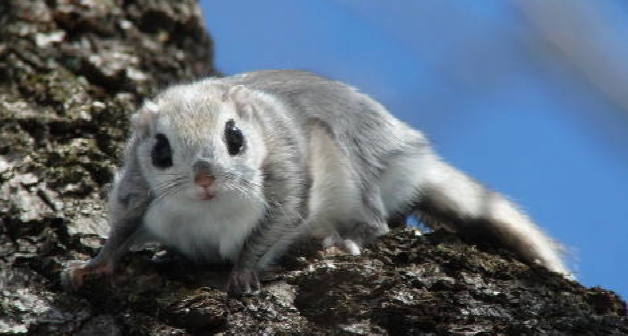Kagoshima Prefecture
Kyushu is Japan’s southernmost “main” island, and Kagoshima one of the prefectures facing west. Kagoshima Prefecture is most famous for its wintering cranes at Izumi, but the prefecture is also rich in many other southern species during winter and summer and exciting for its migratory birds during spring and autumn. A major migration of birds of prey passes through and some of the islands associated with western and northwestern Kyushu receive many exciting East Asian migrants and vagrants.
The sites introduced here are:
Izumi, Akune, and Takae.
Izumi City, Arasaki Crane Sanctuary 鹿児島県出水市荒崎
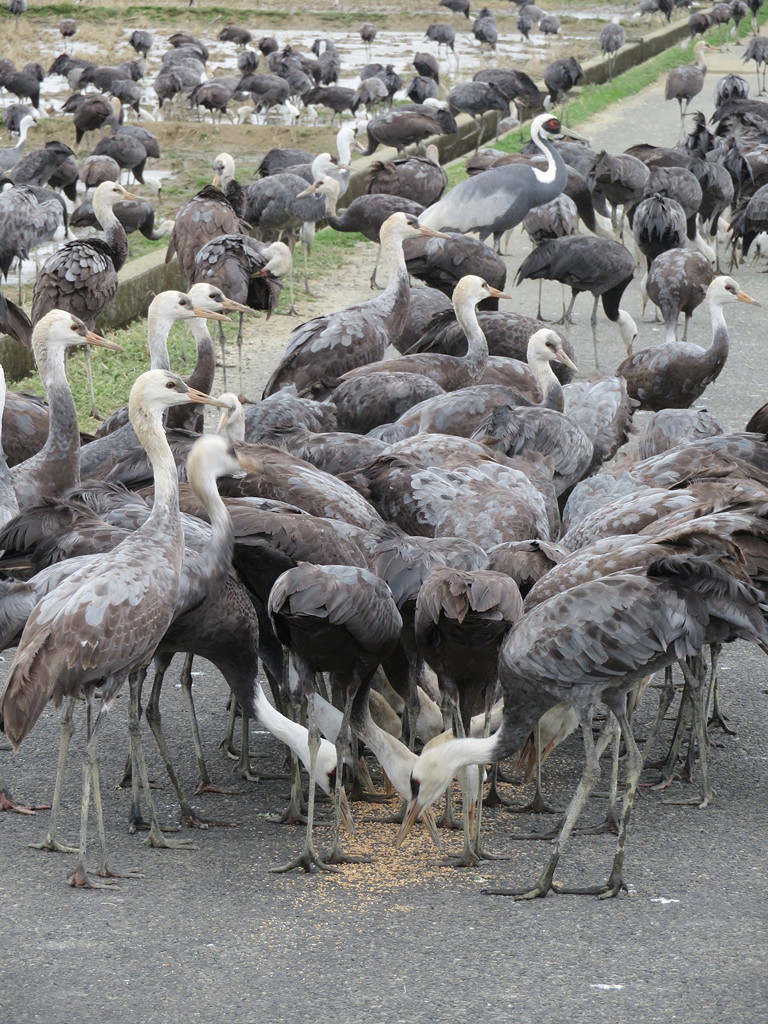 The area of Arasaki, in Izumi City, southwest Kyushu is well-known worldwide for its winter gathering of 17,000 (or even more) cranes, consisting largely of Hooded Crane, with lesser numbers of White-naped Crane, and small but annual numbers of Sandhill Crane and Common Crane.
The area of Arasaki, in Izumi City, southwest Kyushu is well-known worldwide for its winter gathering of 17,000 (or even more) cranes, consisting largely of Hooded Crane, with lesser numbers of White-naped Crane, and small but annual numbers of Sandhill Crane and Common Crane.
However, there is much more to Arasaki than just cranes. In fact it is one of the best winter birding areas in Japan and repays time and exploration. Even if you feel you have exhausted the immediate vicinity of the crane area there are a number of other good winter birding sites nearby (details below).
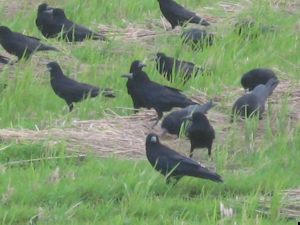 Regulars in the area include Eastern Rook, Daurian Jackdaw, starling flocks that occasionally include Common Starling or Red-billed Starling in addition to White-cheeked Starling (the common species in Japan), various buntings, Russet Sparrow, Dusky Thrush, Pale Thrush, Daurian Redstart, waxwings and grosbeaks.
Regulars in the area include Eastern Rook, Daurian Jackdaw, starling flocks that occasionally include Common Starling or Red-billed Starling in addition to White-cheeked Starling (the common species in Japan), various buntings, Russet Sparrow, Dusky Thrush, Pale Thrush, Daurian Redstart, waxwings and grosbeaks.
Rarities appear most winters, sometimes these include other cranes such as Siberian Crane (once every five or so winters) or Demoiselle Crane (once in about 10 winters), Red-crowned Crane (once in about 40 years). Any Red-crowned Crane found here is assumed to have originated on the Asian mainland, perhaps from breeding grounds in North Korea, or northeast China.
Sometimes unusual or out-of-place geese, swans and gulls can be found around the periphery of the crane flock and raptors including Eastern Buzzard, Northern Goshawk, Hen Harrier, Peregrine Falcon and Merlin appear regularly over the local farmland.
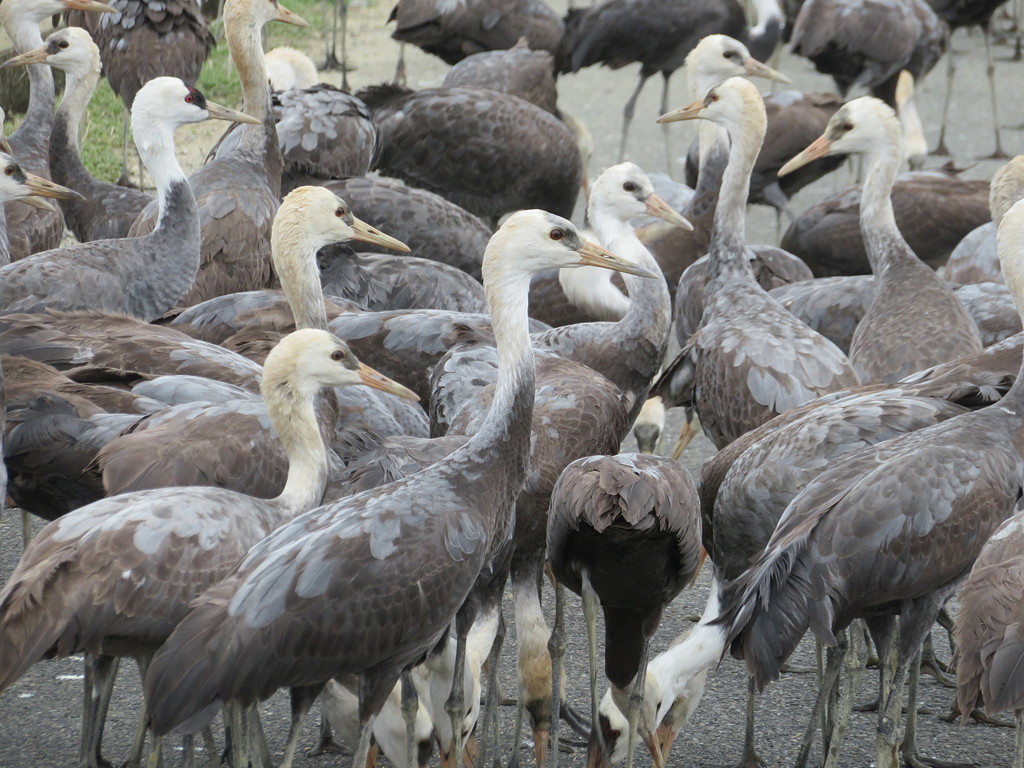 At Arasaki, on the outskirts of Izumi City in northern Kagoshima Prefecture, the wintering crane flock gathers between early December and late February. Up to 17,000 or more cranes of several species congregate, having migrated from their north China and Mongolian breeding areas all the way to Kyushu via the Korean Peninsula.
At Arasaki, on the outskirts of Izumi City in northern Kagoshima Prefecture, the wintering crane flock gathers between early December and late February. Up to 17,000 or more cranes of several species congregate, having migrated from their north China and Mongolian breeding areas all the way to Kyushu via the Korean Peninsula.
The crane gathering is a source of pride for Izumi City as it brings people not only from Japan but from across the world, to witness the spectacle. And what a spectacle it is.
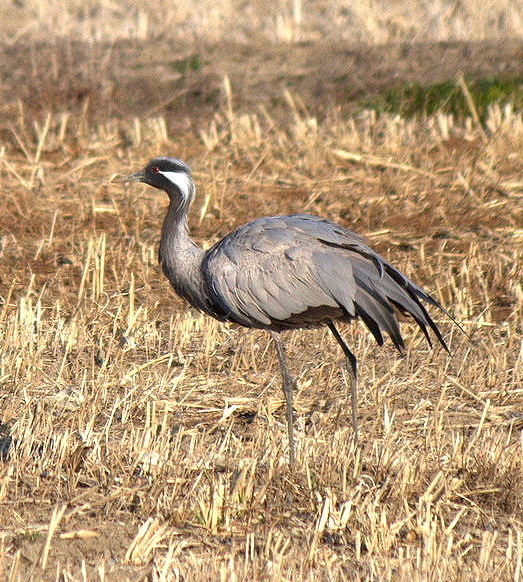 At dawn each winter's day volunteer rangers drive small vans along the tracks between the rice fields in two main areas and spread grain as a food supplement for the birds. In late January and early February they supplement this with blocks of frozen fish, providing additional protein for the birds before they migrate back north to their breeding grounds. As dawn breaks, the rush begins, and thousands of cranes take to the air, flying first from the west roosting site to the food source on the east side and then, sometime later, returning to the west side to feast on yet more free food.
At dawn each winter's day volunteer rangers drive small vans along the tracks between the rice fields in two main areas and spread grain as a food supplement for the birds. In late January and early February they supplement this with blocks of frozen fish, providing additional protein for the birds before they migrate back north to their breeding grounds. As dawn breaks, the rush begins, and thousands of cranes take to the air, flying first from the west roosting site to the food source on the east side and then, sometime later, returning to the west side to feast on yet more free food.
It is a spectacular sight to behold as skeins of bugling cranes fly directly overhead. It is especially thrilling on clear mornings when strings of cranes fly against a backdrop of mountains beyond Izumi and the sun rising beyond.
Access:
JR Izumi Station is on the Kyushu Shinkansen Line and has direct services to Hakata/Fukuoka and Kagoshima and links to all major cities beyond. Local trains also stop at Izumi.
There is also a limousine bus service between Kagoshima International Airport and JR Izumi Station which takes about 90 minutes each way (Nangoku-kotsu:
https://nangoku-kotsu.com/ashuttle/minamata/)
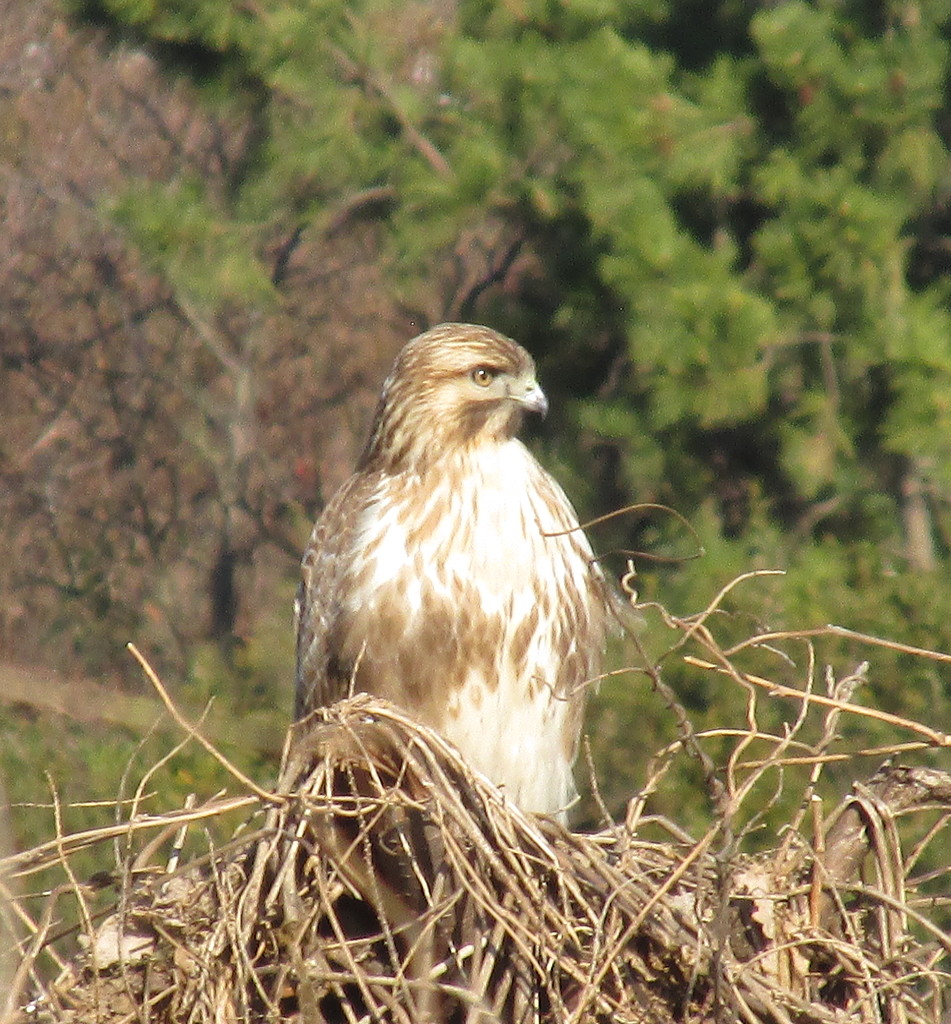 At Arasaki there is a Crane Observation Centre (32.102865, 130.275071) with a small gift shop on the ground floor. An admission fee provides access to the second floor gallery and viewing area, and also to the open roof. From the latter there is a panoramic view across the feeding grounds of the cranes. Often, Hooded Crane, White-naped Crane and Black-eared Kite fly by at eye-level, making the roof an excellent spot from which to photograph them. It is also a great place from which to look out for the various raptors that haunt the area in winter.
At Arasaki there is a Crane Observation Centre (32.102865, 130.275071) with a small gift shop on the ground floor. An admission fee provides access to the second floor gallery and viewing area, and also to the open roof. From the latter there is a panoramic view across the feeding grounds of the cranes. Often, Hooded Crane, White-naped Crane and Black-eared Kite fly by at eye-level, making the roof an excellent spot from which to photograph them. It is also a great place from which to look out for the various raptors that haunt the area in winter.
The crane area at Izumi is divided into two: the west area (Nishi Kantaku), around the crane observation centre and car park, and the east area (Higashi Kantaku), a second feeding and roosting area across the river to the east.
A single main east-west road traverses the Higashi-Kantaku area, although there are several smaller roads as well. It is practical to drive or walk around this area, but do note that the fields on the north side of the road (those enclosed by a black fence) are strictly off-limits) as are similarly marked fields on the west side of the crane observation centre.
In some winters, access to the area changes depending on the level of threat of avian influenza. Please watch for signs and listen for advice from the local rangers, and be mindful of local residents and farmers when parking your vehicle. Regardless of any varying restrictions you cannot miss the cranes — basically there are cranes everywhere you look!
The cranes are more tolerant of vehicles than birders and photographers on foot and typically only move a few metres away from the road as vehicles approach. If you must get out of your vehicle watch from behind it, using it as a blind, so as not to disturb the birds which will otherwise fly off to different fields.
A good place to stand and to watch from — especially during the morning while the cranes are feeding on grain — is beside the small cabins in Higashi Kantaku where the rangers hang out during the daytime (32.104175, 130.293537). Here, the cranes are often just a few metres away, and as they feed, you can often see a solid wall of cranes formed by the sheer number of birds. The volunteer rangers here will often be able to show you where the Sandhill Cranes are if you are unable to locate them.
Toilet facilities are available at the Crane Observation Ccentre and car parks, and also at any of the convenience stores along Route 3 between Izumi and Arasaki.
Sunrise photography is very good from 32.107267, 130.287415 and if you are also interested in looking for Long-billed Plover at Sho (view from the bridge at low tide: 32.091843, 130.274356).
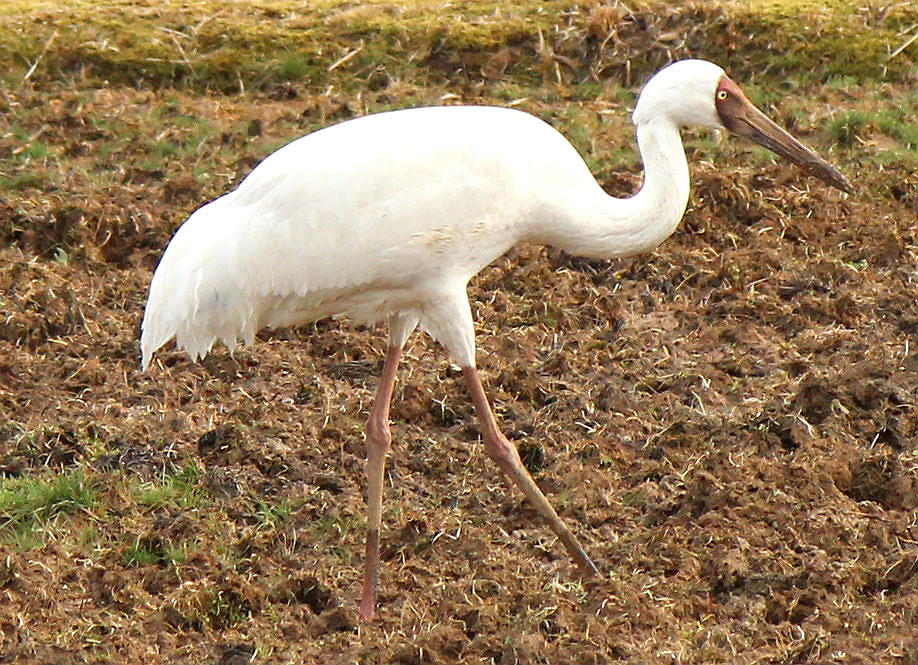 Accommodation:
Accommodation:
There are several business hotels in Izumi City, including two immediately in front of the railway station: Royal Plaza Station Hotel and Wing International. On Route 3 closer to Arasaki is the A-Z business hotel, and right at the crane site is Minshuku Tsurumitei.
Tsurumitei http://izumi-kankou.main.jp/portfolio/shintsurumitei-hotel/
This is a Japanese-style inn run by the family of the late Matano-san, who did so much for crane conservation in the Izumi area and beyond. Japanese-language only. Rooms look out directly to some of the fields where the cranes gather, and at night you can hear the constant noise of cranes as they roost nearby.
Tel: 0996-83-3944
A-Z Hotel https://www.az-hotel.com/izumi/
Tel: 0996-65-6001
Hotel Wing International https://www.hotelwing.co.jp/izumi/
Tel: 0996-63-8111
Royal Inn Station Plaza https://royalin-stationplaza.com
Tel: 0996-64-1100
Akune City, Michi no Eki (rest area) 鹿児島県阿久根市道の駅
About 15 km southwest of Arasaki along Route 3 is Akune Michi no Eki rest area set on a bluff above the sea. From here, on clear days, there are uninterrupted views over the East China Sea to Kamokoshiki Island.
If you have a telescope and tripod and conditions are good (best when there is no wind) this is a good site from which to look for Japanese Murrelet offshore either flying past or feeding in the water. Other species here include Brown Booby, Streaked Shearwater, Temminck's Cormorant, Pacific Reef Egret and along the bluff or along the shore Blue Rock Thrush can often be seen.
The best time to visit is in the early morning during calm weather, when the light is behind you.
Akune Michi no Eki: 31.945997, 130.216493
Toilets, local produce and restaurant facilities are available here.
Kogawa Reservoir (Kogawa Dam) 高川ダム
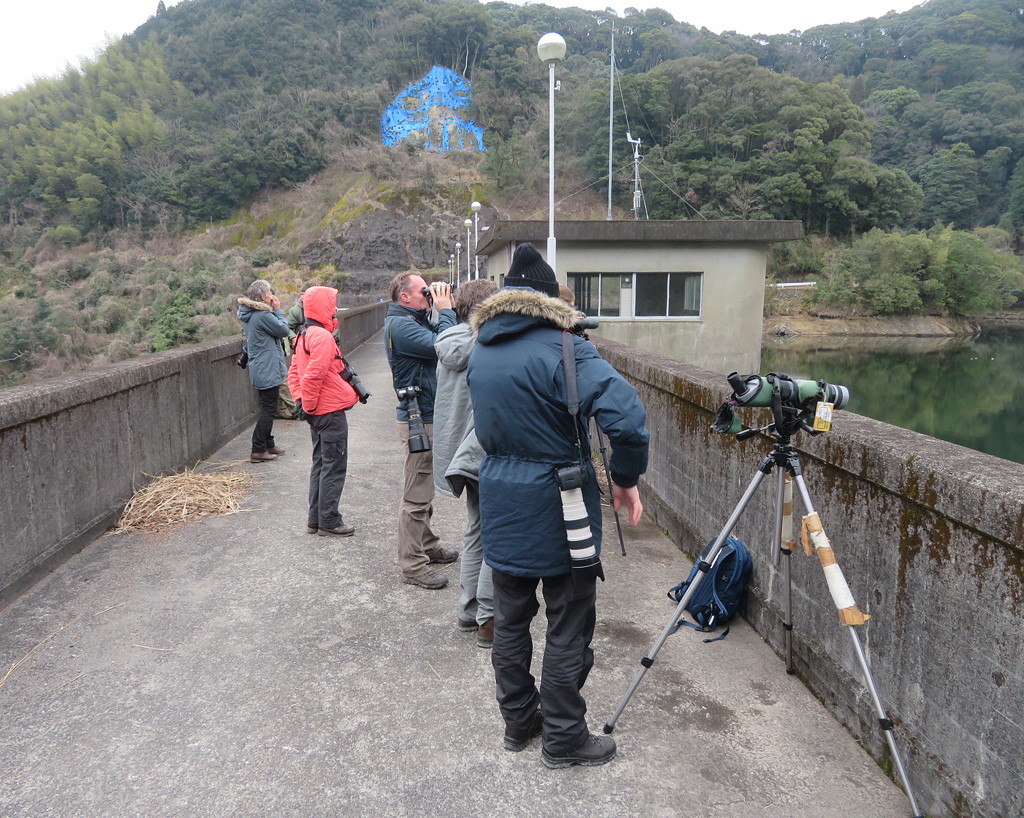 Within an easy drive of the Arasaki crane area, and offering a pleasant change of habitat and species, is the forested basin of Kogawa Reservoir. The forest here consists of evergreen broadleaf trees and bamboos.
Within an easy drive of the Arasaki crane area, and offering a pleasant change of habitat and species, is the forested basin of Kogawa Reservoir. The forest here consists of evergreen broadleaf trees and bamboos.
During winter the area is good for Mandarin Duck and Crested Kingfisher, and various species of small birds.
Kogawa village is about 10 km east of Izumi along Route 447. Once you have reached the village, coming from Izumi, turn right at a gas stand. About 100 meters from the junction, down a short slope, is a small bridge. Stop here to look for Crested Kingfisher, and in the nearby forest Japanese Green Woodpecker are resident. Also on the river which runs alongside Route 447, Crested Kingfisher, Common Kingfisher, Brown Dipper, Japanese Wagtail and Grey Wagtail can be found.
A road continues all the way around the lake, and during the winter there are occasionally large numbers of Mandarin Duck on the reservoir. In the forest surrounding the reservoir look for various species including Japanese Green Woodpecker, Japanese Pygmy Woodpecker, White-bellied (Japanese) Green Pigeon, and also Elegant Bunting, Meadow Bunting, Rustic Bunting, Grey Bunting and Masked Bunting. Along the roadside look out for Daurian Redstart, Red-flanked Bluetail and Bull-headed Shrike, and check from any of the bridges for kingfishers. If you find a mixed flock of Japanese Tit, Varied Tit and Willow Tit you might be lucky to find Ryukyu Minivet tagging along.
Mountain Hawk-Eagle can sometimes be seen soaring over the nearby ridges, and Western Osprey and Black-eared Kite are usually around.
Kogawa Dam: 32.064647, 130.412619
Satsumasendai City, Takae Town rice paddies 鹿児島県薩摩川内市高江町
Map: 31.826439, 130.243104
Takae village's claim to fame is the fact that for about 15 years, from the mid 1990s until 2012, a single Greater Spotted Eagle returned to the area each winter. The area where the bird was usually seen was on the south side of the village. It was often located by it's dog-like barking call as it soared in the sky, perched atop a line of telegraph poles running east to west through the centre of the paddies, or as it sat on top of coniferous trees on the low hills immediately to the south side of the large open area of rice paddies. Observers seeking this bird quickly discovered that the area was rich in other raptors, and held many wintering buntings making it well-worth visiting even in the absence of the eagle.
It is the best area in which to look for wintering raptors in southwest Kyushu, apart perhaps for the area of the crane flock at Arasaki.
Other birds that have been seen include: Oriental White Stork (accidental), Hen Harrier, Osprey and Eurasian Woodcock. Passerines include several species of buntings: Meadow Bunting, Chestnut-eared Bunting, Masked Bunting, Common Reed Bunting and Rustic Bunting among them, Russet Sparrow, and both Buff-bellied Pipit and Red-throated Pipit. Chinese Penduline Tit can sometimes be seen in the reedy area that covers the western part of the area, and Crested Kingisher (occasionally) and Common Kingfisher (often) can be seen along the concreted canal that runs through the centre.
© 2022 Mark Brazil & Chris Cook
Last updated: 20220110

